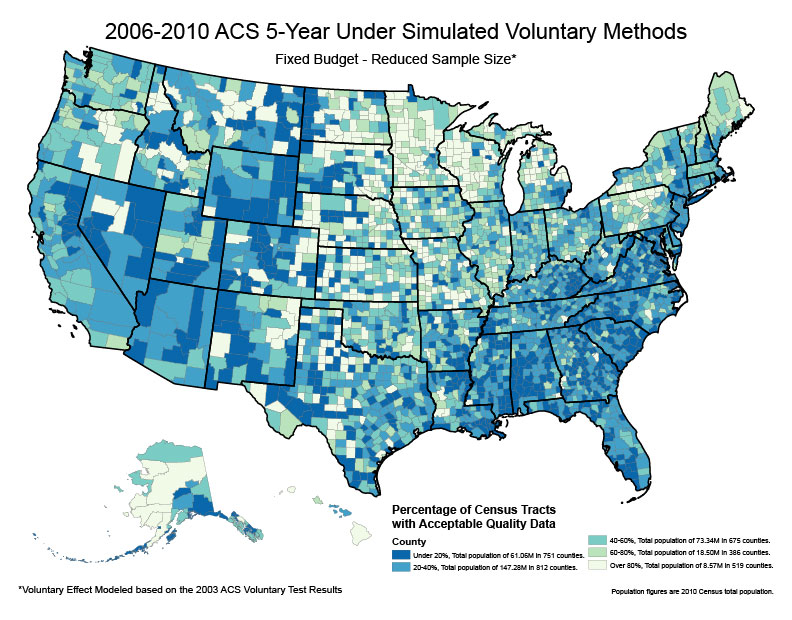
An official website of the United States government
Here’s how you know
Official websites use .gov
A .gov website belongs to an official government organization in the United States.
Secure .gov websites use HTTPS
A lock (
) or https:// means you’ve safely connected to the .gov website. Share sensitive information only on official, secure websites.
-
//
- Census.gov /
- Census Blogs /
- Director's Blog /
- "Collecting Reliable, Timely and Local Census Data"
Collecting Reliable, Timely and Local Census Data
Collecting Reliable, Timely and Local Census Data
I was pleased to participate last week in the inaugural conference of the American Community Survey Data Users Group. This conference brought together a diverse group of data-loving number crunchers from local governments, nonprofits, economic development agencies, researchers and private sector companies from across the U.S. Their common connection: the reliable, timely and local data about their communities provided by the American Community Survey.
Sessions included case studies on how the American Community Survey statistics are used by cities, rural communities and businesses to measure disaster impacts, create jobs and develop policy for transit, housing and health care. Data users said the ACS is the most authoritative source of data on these topics for communities of every size, and how they rely on the availability of a common source of reliable data.
I was also asked about the challenges to survey data collection, the availability of the data and the impacts to the American Community Survey. They asked me what would happen to the survey if it were not mandated by law. As we have explained in the past, we have looked at this question and our research shows that a voluntary survey would reduce the self-response rates significantly. To make up the shortfall, we would have to increase the number of households surveyed and conduct much more in-person follow-up, at an additional cost of more than $90 million annually. If we weren’t able to increase the number of households surveyed we would collect much less data and accuracy would decrease due to increased sampling variation. This would disproportionately affect the accuracy of the results that we produce for many small areas and small population groups.
The maps below illustrate this. Both maps show the percentages of census tracts within each county that have acceptable levels of quality data. The first map shows the percentages under the current, mandatory approach. As a mandatory survey, less than five percent of counties have 80 percent or more of their tracts with unacceptable levels of quality data. This impacts about 2.48 million people.


Canada’s census agency, Statistics Canada, experienced a drop in participation when it moved to a voluntary survey in 2011. The response rate dropped from 90 percent in 2006 to 69 percent in 2011. Due to poor reliability with estimates, there are now a large number of communities in Canada for which there are no statistics released on the general welfare and composition of the population.
Share
 Yes
Yes
 No
NoComments or suggestions?


Top
